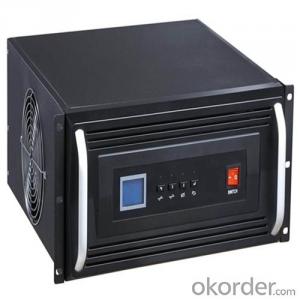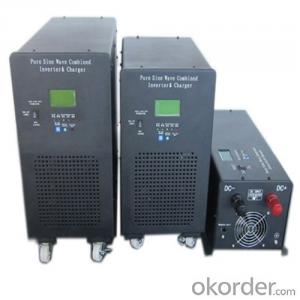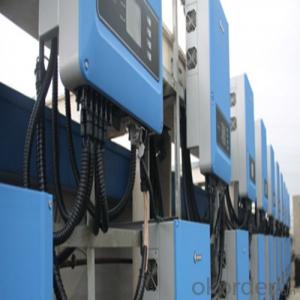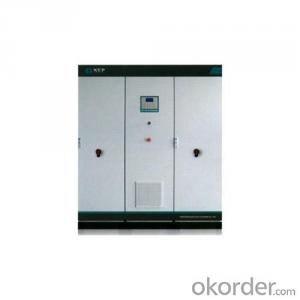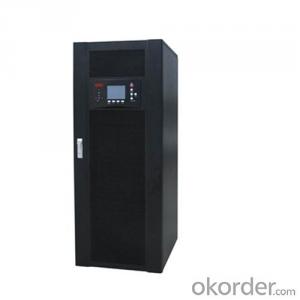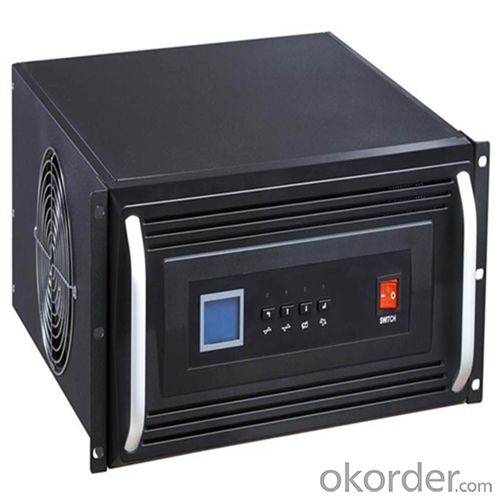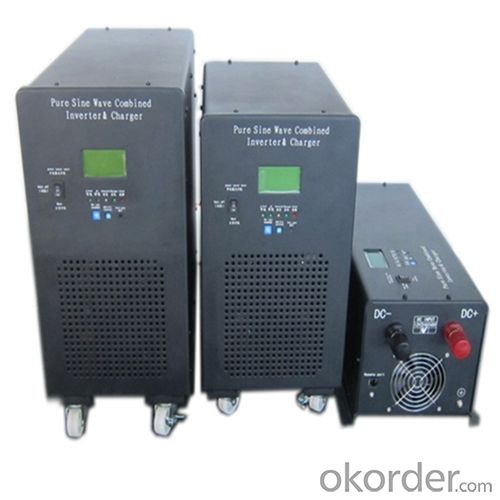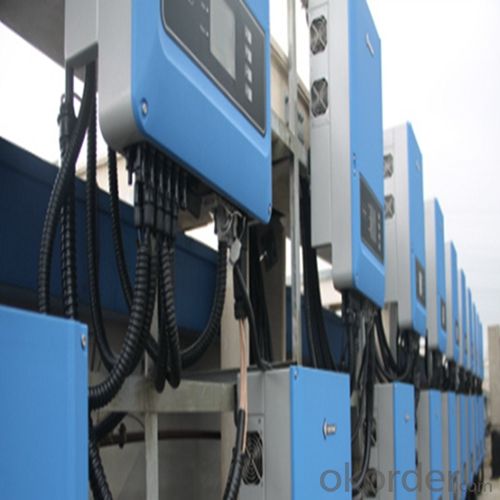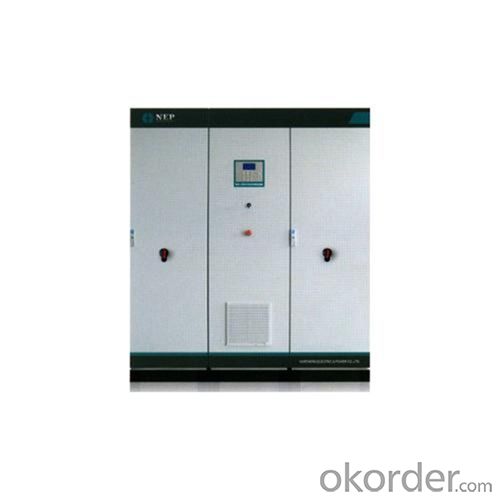80 Kw Solar Inverter Approved Inverter with MPPT Solar Charger 3000W 24V Pure Sine Wave
- Loading Port:
- Shanghai
- Payment Terms:
- TT OR LC
- Min Order Qty:
- 2 pc
- Supply Capability:
- 3000 pc/month
OKorder Service Pledge
OKorder Financial Service
You Might Also Like
Performance Characteristics
· 1. Suitable for all electrical equipments
· 2. Large LCD display for more detailed content
· 3. CPU controlled; fast transfer time
· 4. Intelligent battery management, prolonging the service life of the battery
· 5. Complete protection function, high reliability
· 6. Can provide high current charge
· 7. Can match different types of batteries
· 8. Disassembled LCD box which can make the operation in a distance of 15 meters
Product introduction
EP series is sine wave low frequency inverter, which is specifically designed for home appliances. It is equipped with a big LCD screen so all information is displayed in detail, which makes it more convenient to use. Charging current of the inverter is adjustable from 5A to 45A and you can also select different charging voltage to charge different types of batteries so batteries are under great protection.
Our Service
Samples
Samples are Available for Testing and Market Test.
Warranty
We provides warranty against defects in materials and workmanship for its Uninterruptible power supply, Power inverter/chargers including inverter12v 24v 48V, Solar charge controllers (“Product”).
OEM Service
OEM service is strictly based on the ISO9001 ISO14001 quality assurance system. The TOP involves the effective teamwork of departments from Sales, R&D, and Engineering, purchasing, production & QA, assuring a high quality product and prompt delivery for customers. The standardization of our quality system and the quality stability has earned us the trust of our customers for 12 years.
We have 10 sets of automatic insertion equipments, ICT PCB testing equipments, ATE automatic testing center and aging workshop for all products. Monthly output of UPS series exceeds 200,000. We have been offering OEM service for over 12 years.
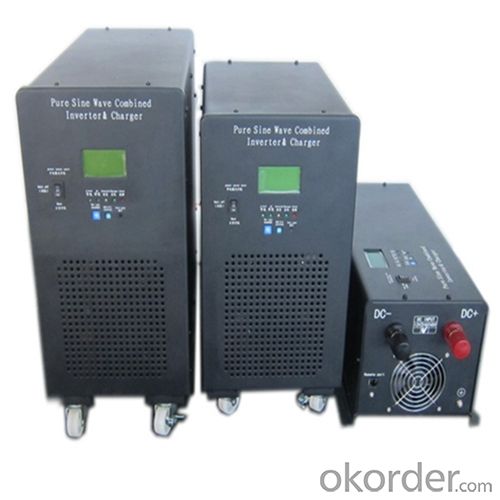
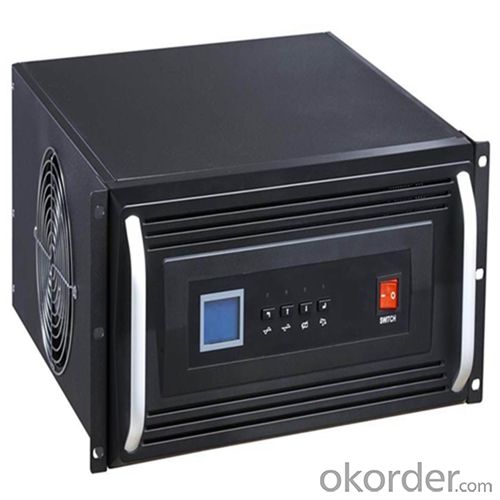
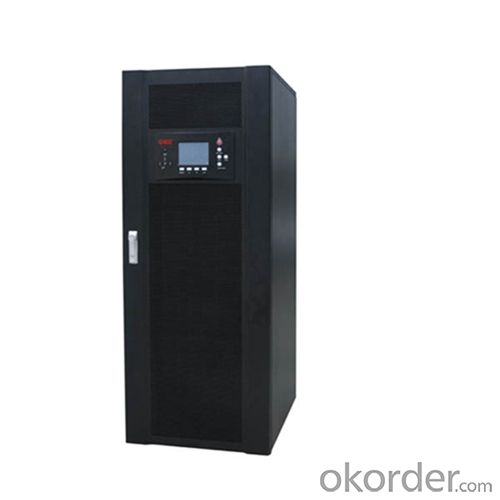
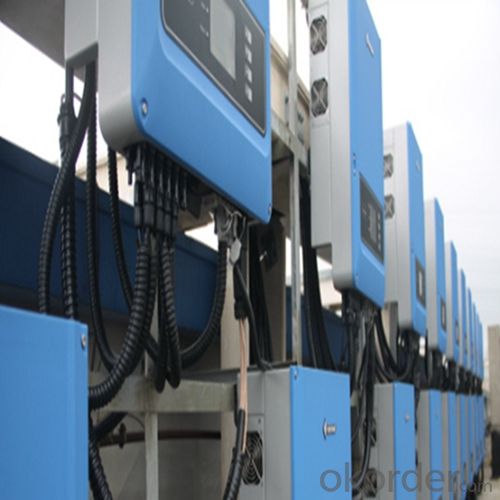
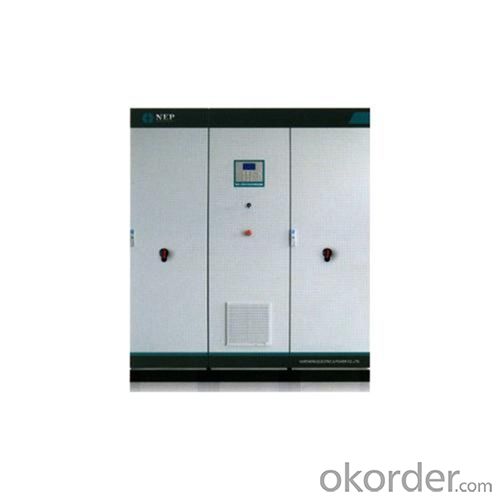
Specifications
Input | |
Input Voltage Range | 182-265VAC |
Output | |
Input Voltage Range | Batt.Mode:50±0.3Hz Mode:48-54Hz(50Hz) or 58-64Hz,Same as AC |
Output Wave Form | Sine Wave (Batt,mode) |
Transfer Time | 10ms(Typical) |
FAQ:
Q: Do you have the CE, TUV, UL Certification?
A: We’ve already passed all the tests, and any certificate is available.
Q: Have you ever sold your products to companies in my country?
A: Of course, we have customers in all general PV markets, but I think we should expand our market share along with the market growth.
Q: When did your company set up? You are a new company, how can I believe your quality?
A: We entered into Solar PV industry in 2005, now we have several plants in manufacturing of a-Si and c-Si panels, and our capacity is 220MW per year. Till now we have already passed all the tests by authorized laboratories, e.g. TUV, CE, UL.
Q: Can you help us install the module if we cooperate with you?
A: We haven’t entered into installation sector, but we have the plan in near future.
Q: How do you pack your products?
A: We have rich experience on how to pack the panels to make sure the safety on shipment when it arrives at the destination.
Q: Can you do OEM for us?
A: Yes, we can.
Q: Can we visit your factory?
A: Surely, I will arrange the trip basing on your business schedule.
- Q: What is the importance of surge protection in a solar inverter?
- Surge protection is crucial in a solar inverter as it safeguards the system against voltage spikes or power surges. These surges can occur due to lightning strikes, grid fluctuations, or other electrical disturbances, and can potentially damage the sensitive electronics in the inverter. Surge protection devices divert excessive voltage away from the solar inverter, preventing costly damage and ensuring the efficient and uninterrupted operation of the solar power system.
- Q: Can a solar inverter be used without solar panels?
- No, a solar inverter cannot be used without solar panels. The purpose of a solar inverter is to convert the direct current (DC) generated by solar panels into alternating current (AC) that can be used to power electrical devices in a home or building. Without solar panels producing DC electricity, there would be no input for the inverter to convert.
- Q: What are the common troubleshooting steps for a malfunctioning solar inverter?
- The common troubleshooting steps for a malfunctioning solar inverter typically include checking the connections and cables for any loose or damaged parts, inspecting the inverter display for error messages or warning lights, resetting the inverter by turning it off and on, and ensuring that the solar panels are receiving sufficient sunlight. If these steps do not resolve the issue, it may be necessary to consult a professional technician or the manufacturer for further assistance.
- Q: How does a solar inverter handle frequency variations in the grid?
- A solar inverter handles frequency variations in the grid through its built-in control mechanisms. It continuously monitors the frequency of the grid and adjusts its own output accordingly to match the grid frequency. This ensures that the solar inverter remains synchronized with the grid and allows for seamless power transfer between the two.
- Q: Can a solar inverter be used with a generator as a backup power source?
- Yes, a solar inverter can be used with a generator as a backup power source. The solar inverter can be connected to the generator's output, allowing it to convert the generator's AC power into usable DC power for charging the batteries or powering the solar energy system. This setup ensures uninterrupted power supply during periods of low solar generation or in case of power outages.
- Q: How does a solar inverter handle variations in solar panel degradation over time?
- A solar inverter is designed to handle variations in solar panel degradation over time by continuously monitoring the output of the solar panels and adjusting its operation accordingly. It helps to optimize the power generation by compensating for any decrease in panel efficiency due to degradation. This is achieved through advanced algorithms and maximum power point tracking (MPPT) technology, which ensures that the inverter operates at the optimal voltage and current levels to extract the maximum power from the panels, even as their performance degrades over time.
- Q: Can a solar inverter be used with different types of communication protocols?
- Yes, a solar inverter can be used with different types of communication protocols. Modern solar inverters are designed to be compatible with various communication protocols such as Wi-Fi, Ethernet, Modbus, and RS485. This allows for seamless integration and monitoring of the solar inverter with different types of monitoring systems, smart home devices, or energy management systems.
- Q: What are the key factors affecting the cost of a solar inverter?
- The key factors affecting the cost of a solar inverter include its power capacity, efficiency, technology type, brand reputation, warranty, additional features, and installation requirements.
- Q: How does a solar inverter handle voltage fluctuations during grid disturbances?
- A solar inverter handles voltage fluctuations during grid disturbances by constantly monitoring the grid voltage. When it detects a fluctuation or disturbance, it adjusts its own output voltage accordingly to stabilize the power supply. This is done through advanced control algorithms that regulate the inverter's power conversion process, ensuring a stable and consistent voltage output despite grid instabilities.
- Q: Are there any government incentives available for solar inverters?
- Yes, there are government incentives available for solar inverters in many countries. These incentives are aimed at promoting the adoption of renewable energy and reducing carbon emissions. One common incentive is the solar investment tax credit (ITC) in the United States, which allows homeowners and businesses to deduct a percentage of their solar installation costs from their federal taxes. In some countries, such as Germany, there are feed-in tariffs that require utility companies to pay a premium for the electricity generated by solar inverters. Additionally, some local governments offer grants or rebates for installing solar inverters or offer low-interest loans to finance the purchase and installation of the equipment. It is important to check with your local government or relevant authorities to understand the specific incentives available in your region.
Send your message to us
80 Kw Solar Inverter Approved Inverter with MPPT Solar Charger 3000W 24V Pure Sine Wave
- Loading Port:
- Shanghai
- Payment Terms:
- TT OR LC
- Min Order Qty:
- 2 pc
- Supply Capability:
- 3000 pc/month
OKorder Service Pledge
OKorder Financial Service
Similar products
Hot products
Hot Searches
Related keywords
